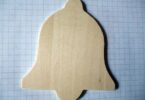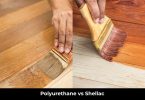If you work in construction or metal works, then you are possibly familiar with a plasma cutter. Knowing the function and how to use a plasma cutter safely is very important to make the most out of this machine as well as to avoid any injuries. This article will provide you with everything that you need to know about this type of equipment.
What can you do with a plasma cutter? A standard plasma cutter is used to cut through any type of hard conductive material such as steel, copper, aluminum, and the like. A plasma cutter provides high precision and no flying metallic debris. As such, plasma cutters are great when used in industries when accuracy and clean cuts are required such as steel fabrication, automobile repair, and customized machining.
Getting Familiar with a Plasma Cutting System

The components that make up a plasma cutter are as follows:
- The Arc Starting Console is the component that produces the spark that gases would pass through in order to become plasma. This electrical arc must be maintained all throughout the cutting process.
- The Air Compressor is required to provide high-pressure gases into the machine. Gases that can be used range from regular air, oxygen, nitrogen, or whatever is recommended based on the machine being used.
- The Plasma Torch is the “pen” that will be used to guide the plasma to the area to be cut. This is where the spark and the gases meet in order to create a plasma which you can then guide by pointing the nozzle in the right direction.
- The Power Source is, of course, the source of electricity which needs to be consistent and regulated depending on the material being cut. The voltage of the power source must be maintained to keep the quality of the arc consistent.
Understanding the Mechanism
Plasma is created when a superheated gas becomes charged with electricity. Once it touches a conductive surface, a circuit is formed. As the plasma is very hot and is blown at the metal, the conductive material melts and is completely cut through once the gas reaches through its entire thickness.
Due to its nature, plasma cutters are best used with CNC routers or similar machines or for works where precision is a must. Typically, metal works where aesthetics and accurate measurements are very important.
How to Use a Plasma Cutter? – 18 Steps

Once you know about the science on how they work, you must now know how to operate a plasma cutter in a safe manner. This is very important so as to minimize wastage as well as to eliminate the chance of damage to the equipment as well as potential injury.
Make sure to follow the steps below before using a plasma cutter. These are step by step procedures that must be done properly for the sake of both safety and convenience.
1. Choose and Prepare a Location
You need to have a flat place that is free from objects that you can knock over or collide with. Make sure also that there are no people around the area. Typically, you would work with a table that has slats so that sparks and dust will not accumulate on the bottom of the metal.
2. Set up the Machine
Ensure that all components are plugged in together tightly. Check for any holes in hoses or for other signs of damage. Do not attempt to use a machine that looks broken or loose. Tighten any screws or fittings as needed to ensure that they would not come loose during operation of the machine.
3. Use Safety Gear and Wear the Right Outfit
Protective safety equipment includes tinted goggles, heavy work gloves, work boots, etc. Darker colored eye protective equipment is required due to sparks as well as the bright light that plasma emits, which can damage the eyes. Optional but highly recommended PPE include face masks, ear plugs, aprons, and jackets. Covered footwear is also highly recommended.
4. Find the Right Cutting System and the Machine
There are many types of plasma cutters depending on your needs. You can read through plasma cutter how to use articles, but you will not have the output that you want if you are not using the right machine. There are several types of plasma cutters depending on certain categories such as handheld or CNC controlled ones.
Plasma cutters can also be differentiated based on the types of gases that they use, or those that emit different levels of heat. Many others are available, so you should do your research to know which one is best to use based on the type of job that you will do.
5. Finding out the Thickness of the Work Piece
You should measure the thickness of the material that you want to cut using a ruler or some other similar instrument. This will allow you to know how powerful your plasma cutter should be, or what your amp settings should be.
There are no clear computations regarding thickness versus power requirements as this the latter will also depend on how strong your material is. Still, this will give you a more accurate estimation that you will eventually be able to perfect through practice and experience.
6. Plugging in the Machine
Plug in the machine to an outlet that will provide sufficient power. Make sure that you are able to get the power that the plasma cutter requires and, in some cases, an automatic voltage regulator may also be recommended. This is to avoid damage to the device, inconsistent output, tripped breakers, or circuit overloads which can all hamper work.
7. Connecting the Air
Depending on your plasma cutter, you will need a certain type of gas and sometimes even a mix of different gases. In any case, make sure that you have a powerful enough compressor that can provide adequate pressure. Make sure also that all fittings are properly secured. Recheck all connectors before turning on the air.
8. Turning on the Air
Turning on the air completes one part of the plasma cutting mechanism. You can actually feel the air rushing from the compressor to the cutting unit in most units. If not, check if the compressor is running and that the hoses are not disconnected. You can also check if there is anything blocking the airflow to the nozzle.
9. Attaching the Ground Clamp
The ground clamp is necessary to complete the circuit for producing good plasma and avoiding electrical shocks. Place the ground clamp in an appropriate location before attempting to start the machine. I recommend you to put it on anything like bare metal or something that isn’t too rusty.
10. Turning on the Unit
Typically, a plasma cutter will have a switch that will allow you to turn the machine on or off. When switched on, the machine is now live so you should be extra careful with your next moves. Should the machine not turn on, turn the machine off again before checking for any loose wires, tripped breakers, or any safety locks that may be present.
11. Setting the Amperage and Current
Set the power of your plasma cutter depending on the material to be cut. Once you’ve got to know how to use plasma cutter; you may learn some basic settings, but you may learn the complete setup process for in-depth knowledge. With practice, you will know exactly what settings to use without looking it up.
12. Cutting the Work Piece
Depending on the machine that you have, you would either have a trigger or a switch that you can toggle to turn the plasma on or off. Simply press the tip of the cutter against the steel to start cutting. Take note that this is a very delicate procedure and should be done with the utmost care.
13. Turning the Unit Off
Turn off the unit using the switch that you used when you turned the machine on. Make sure that you have placed the cutter in a safe location before leaving to turn off the machine. Some systems will also have a visual aid like a panel that will indicate that the unit has been successfully depowered.
14. Detaching the Ground Clamp
Detach the ground clamp as you would no longer require to complete the electrical circuit. Always play it safe by not removing your protective equipment – particularly your gloves – until after this process has been completed. There’s a very low chance of getting shocked, but it would pay to be safe.
15. Turning the Air Off
Turn the air off simply by reversing the process done when you turned on the air before the unit was used. This involves turning a lever or closing a valve. Disconnect hoses and turn off the compressor as needed. Make sure that the compressor has been closed before making any disconnections to avoid injury.
16. Leaving the Torch for Cooling
Your torch will still be hot immediately after use and for several more minutes. Place the nozzle anywhere that will not sear or burn. Keep the nozzle, which will be extremely hot at this point, away from the body or any material that can catch fire. The best places are on the cutting table, a cement slab or floor, or on a rack where the nozzle can hang freely.
17. Winding up the Hoses
Wind up all the hoses carefully. This includes the ground cables, air hoses, power cables, and the main torch line. Arrange them properly, and use some form of binding tools like ropes or clips to keep each individual line separate from each other.
18. Operational Safety
Apart from knowing the plasma regulations, you need to know about the safety rules. So, how do you use a plasma cutter so as to ensure you and your co-workers’ safety? Here are some things that you have to consider when working with a plasma cutter:
- Keep water away from the work area. Similarly, ensure that you are adequately covered against rain or other water sources.
- Ensure that only qualified and trained personnel will operate the plasma cutting machine.
- Safely ground electrical cables. You can also stand on rubber matting to lessen the chances of getting shocked.
- Keep a fire extinguisher near the area to be able to immediately put out any fires.
- Always work with the recommended personal protective equipment.
- Protect yourself from fumes by keeping the area well ventilated.
- Keep objects, especially flammable ones, away from your work area.
- Make sure that you are working with compatible and quality equipment from hoses to compressors and the like.
A plasma cutter is a very convenient way to make quick and precise cuts on metal, especially when compared to traditional cutting methods. However, knowing how to use a plasma cutter is absolutely critical to ensure safety in the workplace.
By following the steps listed above, you can make sure that you will be able to eliminate the chance of accident or injury and you will definitely be able to use your plasma cutting machine in a safe and efficient manner.








